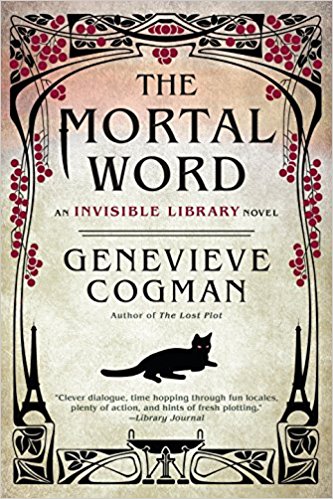 The Mortal Word (The Invisible Library, #5) by Genevieve Cogman
The Mortal Word (The Invisible Library, #5) by Genevieve Cogman Format: eARC
Source: supplied by publisher via NetGalley
Formats available: paperback, ebook, audiobook
Genres: fantasy, historical fantasy, mystery
Series: Invisible Library #5
Pages: 368
Published by Ace on November 27, 2018
Purchasing Info: Author's Website, Publisher's Website, Amazon, Barnes & Noble, Kobo, Bookshop.org
Goodreads
In the latest novel in Genevieve Cogman's historical fantasy series, the fate of worlds lies in the balance. When a dragon is murdered at a peace conference, time-travelling Librarian spy Irene must solve the case to keep the balance between order, chaos . . . and the Library.
When Irene returns to London after a relatively straightforward book theft in Vienna, Bradamant informs her that there is a top secret dragon-Fae peace conference in progress that the Library is mediating, but that the second-in-command dragon has been stabbed to death. Tasked with solving the case, Vale and Irene immediately go to 1890s Paris.
Once they arrive, it seems that the murder victim had uncovered evidence suggesting that he may have found proof of treachery by one or more Librarians. But to ensure the peace of the conference, some Librarians are already hostages in the dragon and Fae courts. To save the captives, including her parents, Irene must get to the bottom of this murder—but was it dragon, Fae, or even a Librarian who committed the crime?
My Review:
In this version of the multiverse the Library serves to provide the balance between the fae worlds of chaos and the dragon worlds of order. Humans don’t do well at either extreme, and it’s the Library’s function to guard and preserve the middle ground where human beings thrive.
Just because the Library serves as a point of balance does not mean that the lives of any of the Librarians that serve it are remotely balanced in any way. It could be said that the Librarians are like that metaphorical duck, “calm on the surface but always paddling like the dickens underneath.”
Librarian Irene Winters’ life feels more like the old adage about jumping out of the frying pan and into the fire – except that for Irene, it’s frying pans and fires all the way down.
 When I first started this series, all the way back with The Invisible Library, it felt a lot like the Thursday Next series by Jasper Fforde, because both stories are all about the power of words, especially the power of words in books.
When I first started this series, all the way back with The Invisible Library, it felt a lot like the Thursday Next series by Jasper Fforde, because both stories are all about the power of words, especially the power of words in books.
But now that we’re five books in, that resemblance has faded. As much as I loved The Eyre Affair, the first Thursday Next book, the series as a whole felt like a one-trick-pony, or a story that was only “funny once” and not “funny always”. It seemed as if the story was more interested in being incessantly clever than in telling a story – or that there wasn’t nearly enough worldbuilding underneath the gimmick to sustain a series.
What makes The Invisible Library different – and better as a series – is that there is plenty of worldbuilding below the madcap adventure. And you really, really need to start with the first book for the world to make sense – because the scaffolding of that worldbuilding becomes more solid with each story.
And they are absolutely oodles of fun – every single one. That there will be at least THREE MORE after this one is excellent news.
Because while this book does have a story that wraps up within the volume, as does every entry in the series so far, it is equally clear that the author is not done with either the world of the Library or the life and adventures of this particular Librarian.
And neither are the readers.
Escape Rating A: This is a complex story in a complicated world. I can’t imagine it making much sense without having read the previous volumes first. And possibly recently. Certainly this is a series that rewards readers who have knowledge of how our heroine got into the fix she’s currently in, and how much her previous fixes – and the fixes for those fixes – have contributed (or conspired) to put her in the awkward, uncomfortable and dangerous place she now finds herself.
I also have the distinct impression that one of these days Irene is going to stop being expendable to the Library and become a power within it, but that day is not yet. And first she has to survive her expendability. That’s never an easy task, as Irene has a tendency to be the fool that rushes in where the angels quaver to tread.
One of the things that I have found fascinating about this series is its treatment of good vs. evil, because there really isn’t one. Individuals commit terrible acts in the service of their particular perspective on the eternal argument, but the eternal argument in this world is between order and chaos, and explicitly not between good and evil.
The plot in The Mortal Word is essentially that of a murder mystery with political overtones. The dragons and the fae are meeting on a neutral world in order to forge a peace treaty. Or at least a non-aggression pact. The Library will take whatever it can get, and it is the Library that is brokering this attempt at detente.
In the middle of the negotiations, someone is murdered. As much high tension as is in the air, it’s not actually surprising that someone ends up dead. However, the victim was the most trusted lieutenant of the dragon monarch who represents that side of this equation. While said monarch wants to blame his arch-enemies the fae for the murder, he also claims that the victim implicated the Library in a possible plot to sabotage the negotiations.
Events are at a standstill until the perpetrator is discovered, and that’s when Irene is brought in. Yes, because she’s expendable. She’s always aware that she will take the blame if anything goes wrong – or if the solution is not satisfactory to all the parties involved. Which is far from the same thing.
She is both shadowed and assisted by agents from both of the courts, and there is treachery at every turn, as well as an entire city full of red herrings – some of them still bloody.
But Irene’s adventures, as she doggedly – and very, very dangerously – follows the clues to their unpopular but necessary conclusion, are always worth following. Every twisty step of the way.
I can’t wait for her next adventure!
~~~~~~ PUBLISHER GIVEAWAY ~~~~~~

In celebration of the publication of the Ace Books, the publisher of The Invisible Library series is offering a giveaway of the ENTIRE series. If you like madcap adventures, traveling through the multiverse, stories about the power of words, and DRAGONS this series is a real treat.
Click HERE for the giveaway or go to https://sweeps.penguinrandomhouse.com/enter/invisible-library-sweeps
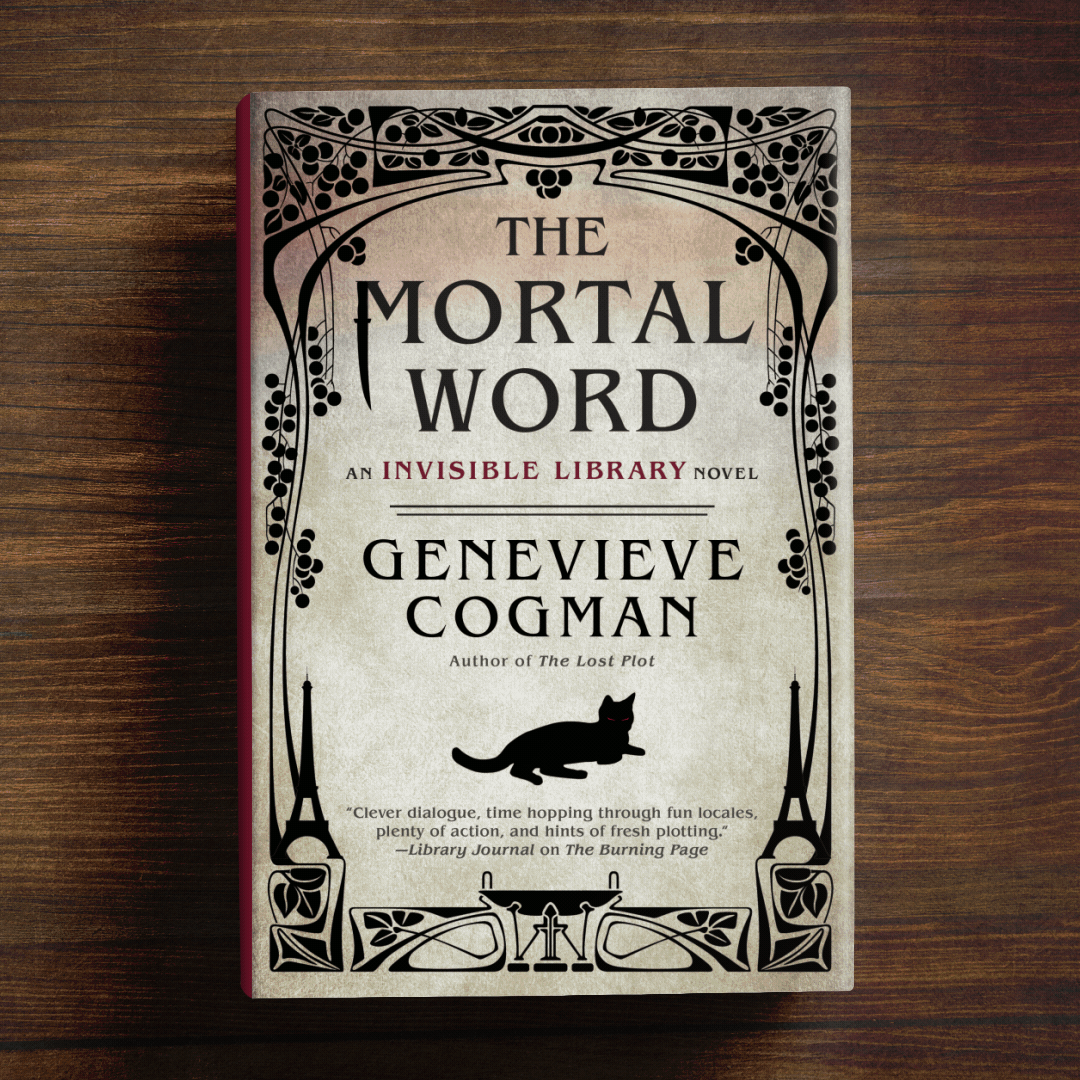

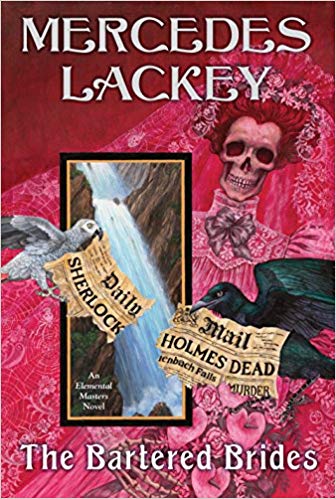 The Bartered Brides by
The Bartered Brides by 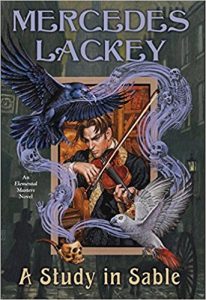 But a few books ago the author moved from reworking fairy tales to dealing with one legendary character in particular. In
But a few books ago the author moved from reworking fairy tales to dealing with one legendary character in particular. In 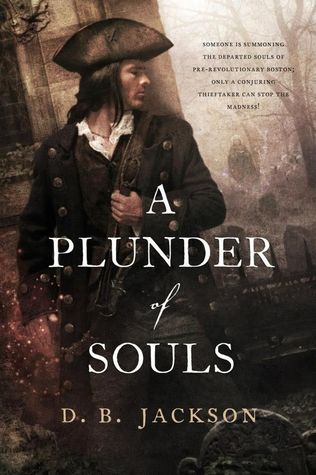 A Plunder of Souls (Thieftaker Chronicles, #3) by
A Plunder of Souls (Thieftaker Chronicles, #3) by  Which brought me back to the
Which brought me back to the 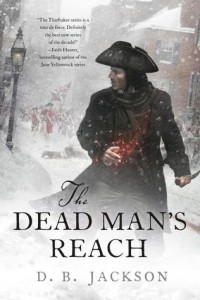 His enemy this time is thankfully not Sephira Pryce. Her character does not feel as real to me as others in the series, and every time she appears I feel myself gritting my teeth. On the other hand, the villain of A Plunder of Souls is just a bit over the top – and he’s barking mad into the bargain. Very powerful, but also completely nuckin’ futz. He’s very scary and also a bit unfocused.
His enemy this time is thankfully not Sephira Pryce. Her character does not feel as real to me as others in the series, and every time she appears I feel myself gritting my teeth. On the other hand, the villain of A Plunder of Souls is just a bit over the top – and he’s barking mad into the bargain. Very powerful, but also completely nuckin’ futz. He’s very scary and also a bit unfocused.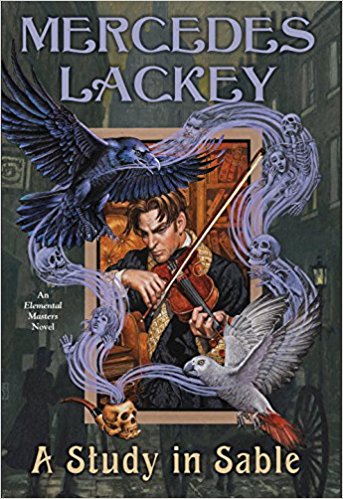 A Study in Sable (Elemental Masters #11) by
A Study in Sable (Elemental Masters #11) by 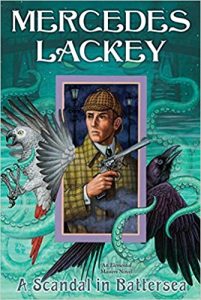 I read A Study in Sable AFTER I finished
I read A Study in Sable AFTER I finished 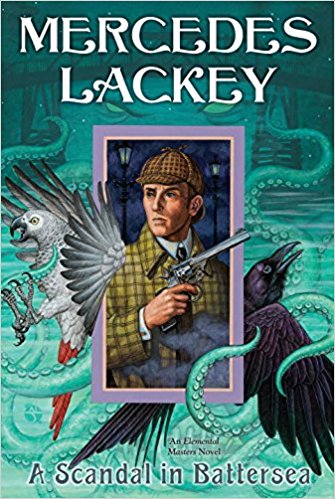 A Scandal in Battersea (Elemental Masters, #12) by
A Scandal in Battersea (Elemental Masters, #12) by 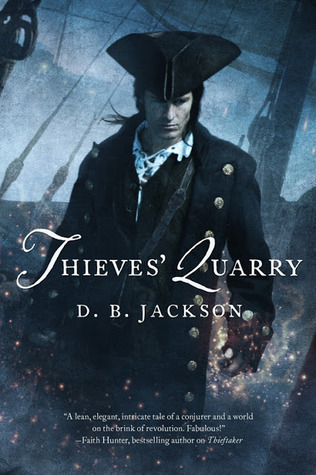 Thieves' Quarry (Thieftaker Chronicles, #2) by
Thieves' Quarry (Thieftaker Chronicles, #2) by 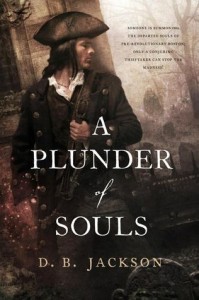 But the mystery in Thieves’ Quarry kept me turning pages until the very end. And no, I didn’t figure it out. When Ethan finally unravels the whole mess, it’s easy to see how he (and we) should have figured things out much, much sooner. But didn’t. And that’s marvelous.
But the mystery in Thieves’ Quarry kept me turning pages until the very end. And no, I didn’t figure it out. When Ethan finally unravels the whole mess, it’s easy to see how he (and we) should have figured things out much, much sooner. But didn’t. And that’s marvelous.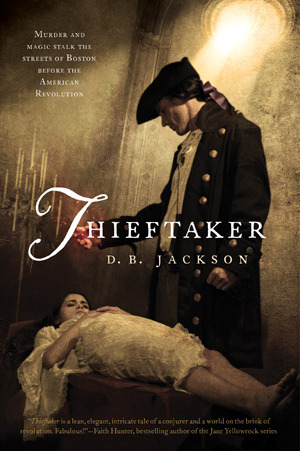 Thieftaker (Thieftaker Chronicles, #1) by
Thieftaker (Thieftaker Chronicles, #1) by 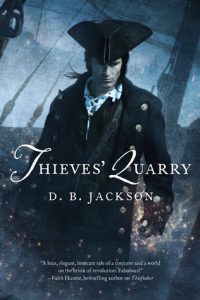 As much as I enjoyed this book, I did have one frustration with it. There’s something about the character of Ethan’s chief rival, the beautiful thieftaker Sephira Pryce, that felt a bit “off” to me. Not that a woman couldn’t be the rival or the villain. Nor that she would be perfectly capable of running what appears to be the Colonial equivalent of an organized crime ring. But in her personal actions she comes off as petulant and childish. And the person with those characteristics so pronounced doesn’t seem like the same person who could be running her gang with such ruthless aplomb.
As much as I enjoyed this book, I did have one frustration with it. There’s something about the character of Ethan’s chief rival, the beautiful thieftaker Sephira Pryce, that felt a bit “off” to me. Not that a woman couldn’t be the rival or the villain. Nor that she would be perfectly capable of running what appears to be the Colonial equivalent of an organized crime ring. But in her personal actions she comes off as petulant and childish. And the person with those characteristics so pronounced doesn’t seem like the same person who could be running her gang with such ruthless aplomb. The Tengu's Game of Go (Tale of the Shikanoko, #4) by
The Tengu's Game of Go (Tale of the Shikanoko, #4) by  At the beginning, all the way back in
At the beginning, all the way back in  The end of The Tengu’s Game of Go teases at a link between Shikanoko and the author’s first book,
The end of The Tengu’s Game of Go teases at a link between Shikanoko and the author’s first book,